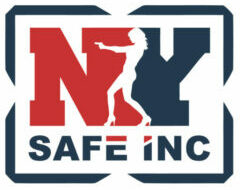Ghost Guns After the Supreme Court: Truth, Law, and What New Yorkers Must Know
Legal Disclaimer: This article is for educational purposes only and does not constitute legal advice. Firearm laws change frequently and vary by state. Always consult a qualified attorney before making legal decisions.
In March 2025, the U.S. Supreme Court upheld the ATF’s rule treating certain firearm parts kits as firearms, requiring serialization and background checks. Headlines screamed about “ghost guns” — untraceable, 3D-printed, dangerous. But what’s the truth? Are they really untraceable? Are they even new? And what does this mean for responsible gun owners in New York?
What Is a “Ghost Gun”?
“Ghost gun” is a media term. The legal term is a Privately Made Firearm (PMF): a firearm made by someone who is not an FFL and usually without a serial number. This practice is older than America itself. Until the Gun Control Act of 1968, there was no federal requirement for serialization. Gunsmiths, small shops, and individuals made their own firearms freely.
Bottom line: Homebuilding is not a new phenomenon. It is part of U.S. tradition. What’s changed is the rise of kits, 3D printers, and online sharing.
Video: PBS NewsHour explains what ghost guns are and why they matter in today’s debate.
SCOTUS and the ATF “Frame or Receiver” Rule
In Bondi v. VanDerStok (2025), the Supreme Court ruled 7–2 that weapon-parts kits that are “readily convertible” into firearms count as firearms under federal law. That means:
- Kits must be serialized by manufacturers.
- Buyers must go through background checks.
- Sales are treated like standard firearm transfers.
For hobbyists, this doesn’t ban personal builds. It just changes the rules on what counts as a “firearm” at the point of sale.
Video: ABC News on the Supreme Court ruling upholding the ATF’s ghost gun rule.
Are Ghost Guns Really Untraceable?
Myth: Ghost guns are completely invisible.
Fact: They’re harder to trace, but not impossible.
- ATF traces start with manufacturer → distributor → dealer → first retail purchaser.
- After that, it’s manual detective work: contacting FFLs, checking bound books, and reviewing out-of-business dealer records. There is no centralized registry by law.
- Unserialized PMFs don’t enter that chain, so they offer fewer leads. But even serialized guns often dead-end after the first or second transfer.
Traceability is not an automatic crime-solving tool. Believing serialization will stop crime is a false hope. The real focus should be on criminal behavior and recidivism.
Video: ProPublica on how the ATF traces guns — slow, manual, and often incomplete.
Recidivism matters: DOJ data shows repeat offenders commit most violent crimes. Tracking criminals, not just objects, saves lives.
Historical Context: Serialization Is Modern
Serialization was mandated only after 1968. Before then, millions of firearms circulated without serials. The GCA of 1968 changed that, requiring serials for all commercial manufacture and imports.
Unserialized guns are not a new threat. They are the historical baseline. Today’s politics reframed them as something exotic.
3D-Printed Guns: Tech Meets Law
3D-printed firearms are just another manufacturing method. The Undetectable Firearms Act requires that all firearms include metal components to be detectable. If you comply, printing is legal under federal law — though many states restrict PMFs.
Ghost Guns in Crime: Data vs. Headlines
ATF data shows a sharp rise in PMF recoveries 2017–2023. But context matters: many seized firearms (serialized and not) are linked to straw purchases, theft, and repeat offenders. Focusing solely on serialization misses these root causes.
State Laws: A Patchwork of Rules
Here’s a state-by-state snapshot. Always confirm current law:
| State | Unserialized PMF Possession | Kit/Parts Sales | Notes |
|---|---|---|---|
| NY | Banned | Banned | Jose Webster & Beigel Acts |
| NJ | Banned | Banned | Aggressive enforcement |
| CT | Banned | Banned | 2019 serialization law |
| MA | Banned | Banned | 2024 omnibus tightened rules |
| PA | Varies | Local restrictions | Philadelphia ban upheld |
| MD | Banned | Banned | SB 387/HB 425 (2022) |
| DC | Banned | Banned | Requires serialization |
| RI | Banned | Banned | Includes 3D-printed firearms |
| TX | Allowed | Regulated by ATF ruling | No state ban |
| FL | Allowed | Regulated by ATF ruling | No state ban |
| CA | Banned | Banned | AB 1621; state serialization required |
Related reading: Sued for Self-Defense: The Slingshot Hero Case
Why Tracking Isn’t Enough
Even serialized guns are only as traceable as the paper trail allows. Tracing is slow, manual, and often incomplete. It’s not a magic fix.
Real solutions:
- Tackle recidivism.
- Target straw purchasers.
- Break trafficking networks.
FAQs
- Are ghost guns illegal federally?
- No. Personal builds are allowed, but kits are regulated and many states ban them outright.
- Are ghost guns untraceable?
- Harder to trace, yes. Impossible, no — ATF still uses paper trails.
- Are 3D-printed guns legal?
- Yes, if detectable and not banned by state law.
- Does New York allow ghost guns?
- No. NY bans unserialized guns and key parts.
- Is there a national gun registry?
- No. Federal law forbids it. ATF relies on dealer records.
Takeaway for Gun Owners
Ghost guns aren’t new. They aren’t invisible. And they aren’t the root cause of crime. The real challenge is addressing recidivism and criminal misuse, not criminalizing history or technology.
👉 Ready to learn more? See our training calendar for CCW and legal compliance classes today.
Legal Disclaimer (repeated): This article is for educational purposes only and does not constitute legal advice. Always check current statutes and consult an attorney before acting.

No responses yet